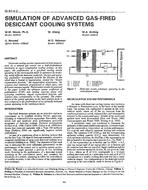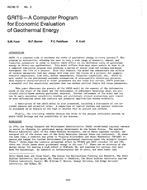Currently several unsaturated hydrofluorocarbons, also termed hydorfluoroolefins, (HFO) are evaluated as replacements for previously used saturated hydrofluorocarbons (HFC) with large global warming potentials. Some of these new HFOs are oxidized in the troposphere and form the persistent and mildly phytotoxic trifluoroacetic acid (TFA) with larger molecular yields than those of currently used HFCs. The most important new compound in terms of expected future emissions and TFA yield is HFO-1234yf (2,3,3,3-tretrafluoropropene), which may replace HFC-134a (1,1,1,2-tetrafluoroethane) in mobile air conditioners. Here we review previous findings on TFA in the environment and compare recent TFA measurements in Switzerland with those from the 1990s when HFCs with considerable TFA yields were introduced. Changes in rainwater concentrations were not significant for two sites in northern but were positive for one site in southern Switzerland, where photochemistry is accelerated. The latter may point towards enhanced production of TFA from increased HFC background concentrations during the last decades but cannot be generalized due to the large variability and sparsity of the observations. By means of atmospheric chemistry and transport modeling we investigated TFA concentrations in rainwater and TFA deposition rates that would result from a complete switch of the European vehicle fleet to HFO-1234yf. We estimated total European HFO-1234yf emissions of 11.0 to 19.2 Gg yr-1 for 2020. Since the lifetime of HFO-1234yf is relatively short, maximal TFA concentrations and deposition rates were simulated close to emission centers. Predicted maximal summer-time TFA concentrations in European rainwater reached up to 7,700 ng L-1, which is more than one order of magnitude smaller than the no-effect level of the most sensitive fresh-water algae. Maximal annual TFA concentrations were predicted to stay below 2,500 ng L-1. If HFO-1234yf emissions remain within the envisaged range our results indicate no direct effect of additional TFA on the environment. Nevertheless, uncertainties remain in our understanding of natural TFA sources and cycling and should be addressed in future research. This issue could gain importance, if HFO-1234yf will be used also for other applications or HFOs with similar TFA yields would be introduced.
Product Details
- Published:
- 2012
- Number of Pages:
- 13
- File Size:
- 1 file , 1.8 MB
- Product Code(s):
- D-ANRC12-13
- Note:
- This product is unavailable in Russia, Belarus


